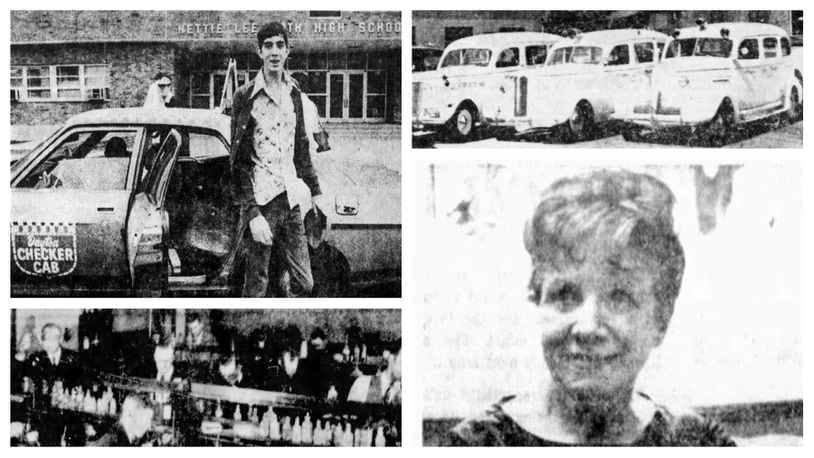Here’s a look at some stories happening the week of Sept. 24-30.
Sept. 24, 1937: Reporter investigates Dayton Y.M.C.A. “City within city”
A Dayton Daily News reporter had heard that members at the YMCA were talking about their organization as a “City within a city,” and decided to go see why they claimed that nickname.
The reporter found something of a “self-contained community.”
Floor after floor of homey dormitory rooms and a cafeteria and grill proved that one could eat and sleep there. The reporter discovered private dining rooms for parties and club luncheon meetings, a small chapel and library.
It even had its own tailor shop and barber shop.
There was a YMCA college campus, where students could take courses on a wide variety of subjects from poetry to how to run a machine-shop lathe. Students had access to a complete chemistry laboratory. Students could also join a musical ensemble, mixed chorus or glee club.
Sept. 28, 1947: New ambulance system wins praise for first four weeks of operation
Until Sept. 1, 1947, a single Dayton police ambulance, manned by two patrolmen, was responsible for getting accident victims to one of the three Dayton hospitals that had emergency rooms.
But starting on Sept. 1 of that year, ambulance service was switched to four ambulances provided by Hoyne Funeral Home, under contract with the city.
Hoyne put the ambulances in service 24 hours a day. On average, there were about four calls a day for ambulance service.
Three times in the first four weeks, ambulance service had been required for two accidents in different places at the same time.
Sept. 24, 1948: Details of proposed sports arena revealed
Before there was UD Arena, a different arena had been proposed for that location.
In 1948, a $4 million War Memorial Sports Arena was proposed. The building was designed to hold 10,500 people on 110 acres of land donated by NCR, opposite the Deeds carillon.
It was to be dedicated to the memory of servicemen who died in World War II.
The auditorium was designed to be used for all types of indoor sports, public assemblies, exhibitions, conventions and “mass pageantry.”
A county bond issue to cover the cost of the project was put on the November election ballot that year.
The tax levy failed and the arena was never built.
Sept. 25, 1957: Air Force probes plane crash fatal to 4 in East End
An Air Force B-26 bomber lost power 15 minutes after takeoff and plunged into an East End neighborhood, killing four people.
The twin engine plane crashed into a house at 1843 Tuttle Ave, killing the two pilots and two residents of the home.
The husband of one victim was pulled from a rear bedroom of the house seconds after the crash, suffering a deep gash on his arm.
The plane hit parts of 5 houses on its decent, taking out chimneys and antennas before shearing off the complete second floor of a house before going directly into the home of the victims.
A tall column of smoke from the crash attracted thousands of onlookers, blocking traffic on the entire east side of the city.
The aircraft had taken off from Wright Field to practice radar ground control approach landings at Patterson Field.
Sept. 24, 1964: Alphabet going out of style? Glyphs likely replacement
Long before smartphones, Dr. Doris T. Allen predicted a world using emojis.
In 1964 they were not called emojis, she called them “glyphs.”
Dr. Allen pointed out that primitive men used pictures to communicate with one another. The most famous picture writings, Egyptian hieroglyphics, were carved in stone.
A professor of psychology at the University of Cincinnati, she was working with glyphs in the hope they could be used for international communication.
She hoped that the use of glyphs or “picture words” could be expanded into a form of communication that would cross language and cultural barriers.
Allen gave an example of a glyph representing the sun, pointing out that it would be immediately recognizable by people in every part of the world, regardless of their native language.
Sept. 25, 1975: 59 students go by cab in magnet school plan
In 1975, the Dayton school system was spending $142 daily on taxis to transport 59 students to and from magnet programs at Roth and Dunbar high schools.
The idea of magnet schools was to draw students from all over the city, mixing blacks and whites in programs, as part of the school board’s desegregation plan.
The cabs were being used because there were so few students and there was only a 20-minute window for transportation.
If buses were used, it would have taken several of them, at the cost of $60 each per day.
The highest cost per taxi run was $8.50 for five students picked up from five high schools. Other runs were cheaper.
About the Author
